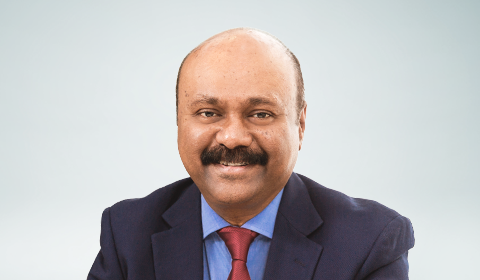Imagine you arrive at a clinic with odd chest pains. The doctor is in, but in reality, thousands of miles away. You discuss your symptoms with the doctor onscreen, tests are conducted using online apps, and your prescription, should you need one, is sent directly to your local pharmacy. Welcome to the new world of telemedicine or telehealth – technology that delivers virtual medical consultations for everything from regular checkups to sudden symptoms of acute illness.
Can compassionate, effective care be delivered remotely? That question is still being answered. Critics warn that overall costs could rise due to increased potential for misdiagnoses. Proponents, however, see an alternative that could be particularly cost-effective, especially for patients with conditions needing consistent monitoring.
Amid the rising threat of infectious disease and aging populations, telehealth services are expanding in most parts of the world, including in the Middle East. RGA asked Dr. Dennis Sebastian, Regional Director for Health, RGA Middle East, to evaluate this emerging technology’s future in his region. At question: Can a “bedside” physician visit truly be replaced by a “webside” one?
The COVID-19 pandemic emerged shortly after this interview was first conducted. RGA asked Dr. Sebastian to share whether the pandemic has prompted any reevaluation of telemedicine in the region.
COVID has spread aggressively across the globe, and the Middle East has not been an exception. However, COVID has also changed the way healthcare is being delivered here, with telehealth gaining better utilization, as a means to overcome lockdowns and curfews. Two local telehealth providers informed me that, for the past two weeks, utilization of their services increased by approximately 10% each, and now hospitals are in various stages of launching their own teleconsultation services. While this could be a temporary initiative for the providers, it could potentially be the start of a behavioral change for the consumer.
What are we actually talking about when we talk about telemedicine? Is this about video consultations, phone-a-physician services or something else?
Telemedicine involves a broad and growing area. In Dubai, where RGA Middle East is based, the local regulator has divided telehealth into six key areas: teleconsultation; tele diagnosis; telemonitoring (remote patient monitoring); mHealth (mobile health); telerobotics and robot-assisted services; and telepharmacy. These capabilities encompass consultations, assessment, counseling, medical advice, remote disease management, referrals, diagnostics, scheduling appointments and lab tests; monitoring chronic conditions; prescribing and dispensing medication; and transfers of electronic health records between remote specialists and local healthcare providers.
What has been driving telehealth’s growth in the Middle East?
In September 2019, the Dubai Health Authority (DHA) issued the Standards for Telehealth Services, detailing the general regulations applicable to all telehealth establishments and also providing well-defined terms and conditions for telehealth consultation, treatment, diagnosis, monitoring, and intervention.
Although the Middle East currently has one of the smallest telehealth markets, the region’s increasing aging population, along with rising penetration of private health insurance, increasing cost of care, and growing incidence of diabetes and hypertension, are key drivers of demand for telehealth services.
Another factor that may influence telehealth’s growth in the Middle East is the sizable penetration of the Internet in the region. As of mid-2019, according to Statista, the region’s penetration of Internet access was 67.2%, while the rest of the world’s was 56.8%. In addition, Global Media Insight reports that 90% of the UAE’s total population are active mobile internet users, and 61% of that population are completely reliant on smartphones for internet access.
Telehomecare, which refers to delivery of healthcare services to patients at home via telecommunications technologies, is another expected area of growth. At a time when more people are living longer and more are suffering chronic diseases, healthcare providers are seeking ways to offer more effective health checks between doctor visits. Few medical specialists in the region right now are able to manage chronic and long-term conditions, so this area could see substantial increases, especially among aging populations.
Has telehealth lived up to expectations yet?
Presently, demand for hospital-driven telehealth services in the region is rising, particularly for services such as teleradiology and telepathology. Consumer-targeted telehealth solutions are also increasing, but I don’t think all of the consumers who have downloaded telehealth services are engaged users.
What’s been most surprising about telehealth’s evolution in the region?
The major surprise has been that most telehealth providers have focused on teleconsultation services in an attempt to replicate the success of such services in the U.K. or U.S. Physician accessibility is not a key issue in the Middle East: the physicians-per-1,000 index for GCC countries is 2.5, which is comparable with the Organization for Economic Co-operation and Development index of 2.9 and the U.S.’s index of 2.55. However, more than 70% of the Middle East’s total insured population are blue-collar individuals who may not have smartphones. These individuals might not fulfil the target assumptions of any business plan driven by teleconsultation.
How has telehealth and telemedicine affected the Middle East’s healthcare and health insurance systems?
Telemedicine is currently being used as a gatekeeper for some health care plans. Telehealth as a means of chronic disease management is also being promoted by insurers and health service providers. It is, however, too early to measure its effectiveness from a claims utilization or outcome perspective, as we have not yet observed nor have any measured outcome report to justify any reduction in claims frequency or costs.
What are the biggest barriers to more widespread implementation of telehealth in the Middle East and what lessons can other markets learn from the Middle East experience?
I see four key barriers. The first two are that physicians in the Middle East are readily available, so telehealth is not really needed, and there is a perception that care quality is higher during a face-to- face visit and that telemedicine care and service providers are not of the best quality.
A third barrier is that initiatives or incentives to use telehealth currently being provided to potential users in the region have not been effective. In GCC countries, where the patient is not the payor of premium or medical expenses incurred, better incentives will be needed to develop responsible and engaged telehealth users.
Finally, regulatory frameworks for telehealth here in the Middle East, with the exception of the UAE, are still in very nascent stages. As regulations evolve, telehealth will be able to become more structured, usable, and accountable. This might encourage insurers to invest in it and promote it, which could spur the region’s consumers to utilize it more fully.
The value proposition of telemedicine – increased access to care and better fit-for-purpose – is significant, but even its strongest advocates will admit that the potential exists for technology to get in the way of care. It will be important for the insurance medicine community to work collaboratively with healthcare providers to define the right telemedicine applications for the right markets, and also establish circumstances and conditions in which the technology can become a distraction.



